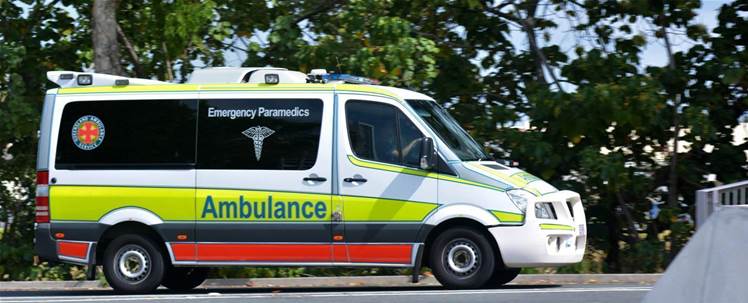Queensland paramedics are still having to print out digital ambulance reports when transferring patients to hospital, despite the arrival of the state’s single digital health record.

An audit into emergency department (ED) wait times [pdf], released this week, reveals that system integration with the supposedly integrated electronic medical record (ieMR) is lacking in hospitals.
“Despite the Queensland Ambulance Service (QAS) becoming part of Queensland Health from October 2013, there is a lack of system integration with ieMR modules in hospitals,” the report said.
“This limits Queensland Health from being more successful in improving performance and identifying root cause issues in the short term.”
Paramedics currently use iPads to “record detailed treatment and transportation information for each patient they attend” in an electronic ambulance report form (eARF).
The eARF was introduced to replace the paper-based ambulance report form when the ieMR was rolled out.
But the electronic form is “not linked into the digital hospital system through the iEMR”, meaning paramedics have to “print out digital ambulance reports forms and provide hard copies to EDs.
“This is not an efficient use but is a critical process for sharing information,” the Queensland Audit Office said.
Worse still, in instances where ambulances are urgently dispatched to new jobs, paramedics may only hand over their paper forms at the “next available opportunity”, which could be the next shift.
Queensland Health said verbal communication between paramedics and ED staff during handover “partially mitigated” the risk that key patient condition and treatment information is not passed on.
Integration suspended under six-month IT project freeze
The audit reveals work had been underway to “improve patient handover at EDs” through a system interface project that first began in February 2019.
But the project was put on hold in March 2020 “to focus on the Covud-19 planning and response effort” and the freeze was continued under the government’s “six-month hold” on all non-essential new IT works.
The six-month freeze was one of a number of savings measures introduced in response to the pandemic in July 2020 aimed at redirecting $3 billion into the state's coffers over three years.
Earlier this year it was revealed that projects worth a combined $92 million were suspended across a number of departments, though at the time it was not clear if Queensland Health had paused any.
“When the project was put on hold, Queensland Health had been trialling a pilot digital solution called the Digital Ambulance Report Application at the Princess Alexandra Hospital,” the audit said.
“This solution aims to enable the sharing of QAS patient data with EDs, specifically the electronic ambulance report form.
“The project was put on hold as part of the Queensland government’s debt and savings plans. Because of this pause, Queensland Health has not compiled any findings from the trial.”
The audit has recommended that the system integration project be resumed to "improve real-time (instant) sharing of QAS data with EDs”, which Queensland Health has agreed to.
Queensland Health said this would allow “electronic transfer of the 'electronic Ambulance Report Form (eARF)' data to Queensland Health emergency departments” in the short term.
But “further scoping work” is expected to be needed to “integrate systems and provide real-time data sharing”.
The audit also found QAS was not always removing systems access from former staff, with corporate network accounts for 28 of the 71 employees who left in April 2019 not deactivated six months later.
Seven of these accounts were “accessed after the staff separation date”, though a subsequent review by QAS found none had accessed patient records.
QAS has since initiated quarterly user access reviews and, following approval from the ICT management committee in October 2020, has deactivated 300 inactive user accounts.

.jpg&h=140&w=231&c=1&s=0)
.png&h=140&w=231&c=1&s=0)



















